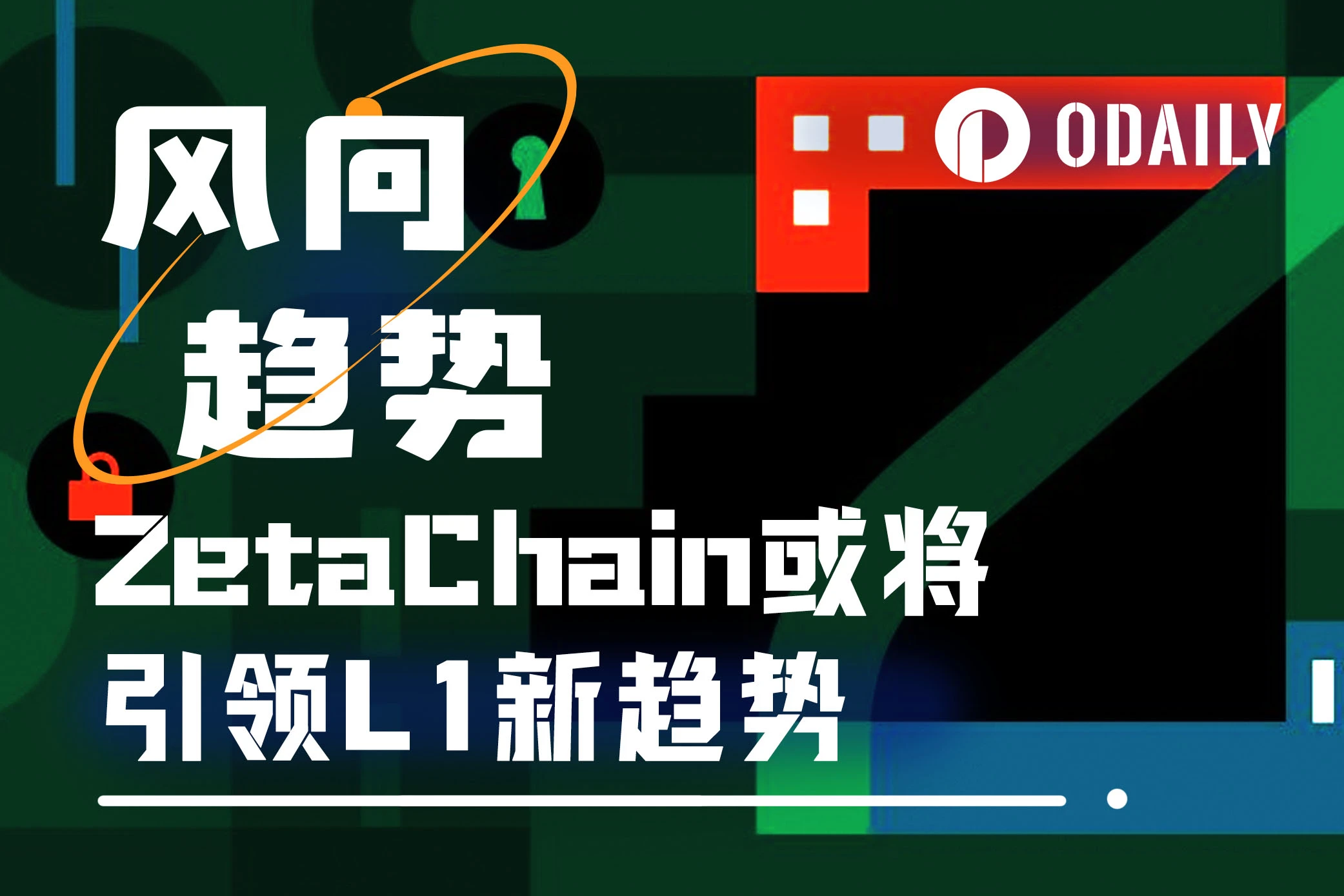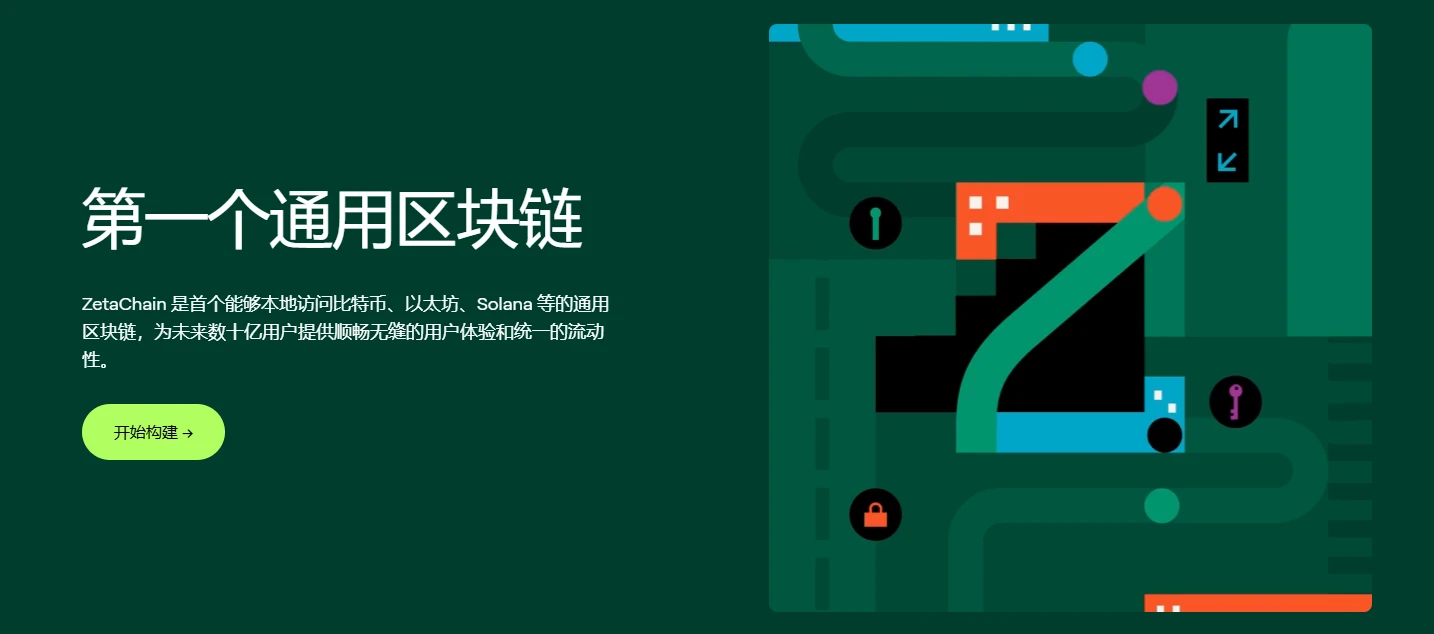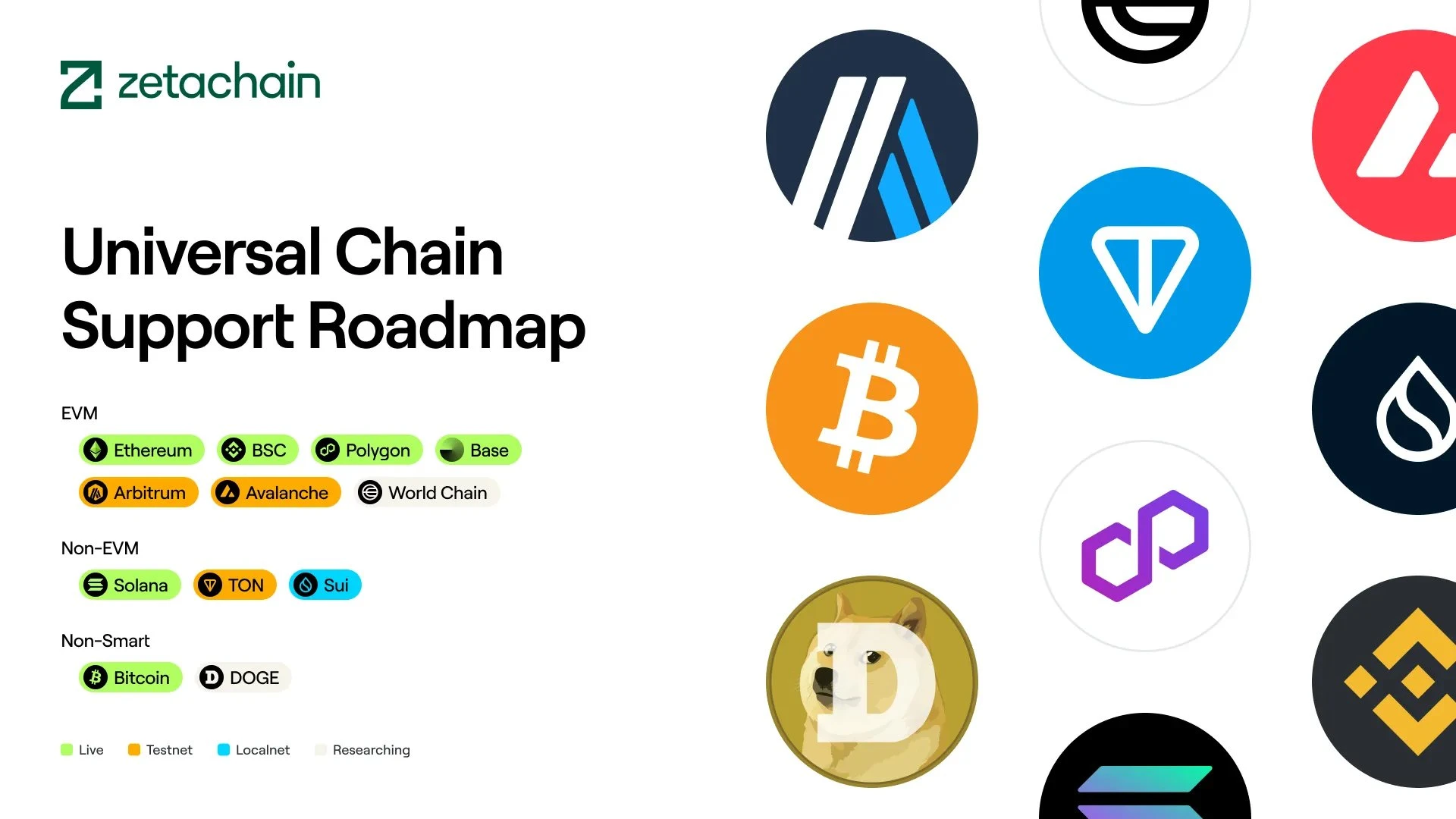Original | Odaily Planet Daily ( @OdailyChina )
Author | Asher ( @Asher_0210 )

The rise of the SVM ecosystem and a new paradigm for cross-chain interoperability
Solana leads the bull market, and the SVM track attracts attention
In this round of bull market, Solana has entered a golden age relying on the spontaneous growth of the ecosystem, among which the rise of SVM (Solana Virtual Machine) is even more critical. Compared with the advantage of EVM in compatibility, SVM relies on Solanas powerful performance, focuses on high-frequency scenarios, and achieves faster transaction speeds and lower gas fees.
At the beginning of this year, the SVM track continued to heat up, and the pattern quietly evolved. SonicSVM started with 2 billion FDV and went straight to Upbit, shocking the market; SOON subversively allocated 51% of the tokens to the community, and even VCs had to subscribe through NFT, triggering a wave of imitations; Eclipse set off a nationwide cattle breeding craze, and blue-chip ASCs made great strides; Solanas top re-staking protocol Solayer was not far behind and launched the SVM public chain InfiniSVM to increase its stake in this fiercely competitive track.
Thanks to Solanas continuous strengthening of its advantages in the competition with Ethereum, the SVM track is gaining favor from more and more high-performance decentralized applications and has become the main battlefield for a new round of innovation.
The limitations of a single ecosystem make cross-chain interoperability a necessity
As Vitalik Buterin said, interoperability is the future. Although the Solana ecosystem is still hot and the rise of the SVM track has optimized the user experience, a single ecosystem always has limitations, and cross-chain interoperability has become an industry necessity. Recently, the BNB Chain ecosystem has rapidly heated up under the promotion of CZ, attracting a large number of Solana ecosystem users, and the problem of data islands between chains has become more prominent. Therefore, ZetaChain, which supports MoveVM, SVM, EVM, and Bitcoin ecosystems and can achieve seamless connection between different chains, has attracted the attention of Odaily Planet Daily.
Previously, the success of Sonic, SOON, and Movement has verified that the demand for high performance and scalability is becoming more and more urgent. Virtual machine tracks such as SVM and MoveVM have become the focus of discussion in the current crypto industry. In this context, ZetaChain has higher potential. When it was launched, its FDV exceeded 5 billion US dollars. It has been unlocked for a long time and still performs strongly. It is more competitive than Altlayer, Manta Network and other projects launched on Binance at the same time. In addition, ZetaChain was officially launched on Binance Alpha yesterday and entered the second round of Binance voting for listing ( click here to jump to the voting link ), further increasing market attention.
In the future, as the ecological heat may shift to non-smart contract chains, achieving seamless flow of data and assets will become a hard power. ZetaChain may stand out and become a leader among many interoperable L1 projects through a more simplified and universal approach.
Advantage profile: Why is ZetaChain favored by top Web2 companies?
Basic overview: Simplify blockchain application development and abstract the concept of chain

Image source: ZetaChain official website
ZetaChain is a decentralized smart contract platform (Layer 1) that allows users to send information and transfer crypto assets between different blockchains such as Solana and BNB Chain (including heterogeneous chains such as Bitcoin and Move), solving the problems of cross-chain and multi-chain without any middlemen or additional steps. ZetaChains mission is to build a platform that enables global access, simplicity, and practicality on any blockchain. ZetaChain is different from most current Layer 1 projects and has a more ambitious goal. Layer 1 projects usually focus on improving the carrying capacity of the underlying layer, while ZetaChain focuses on how to connect these evolving underlying carrying capacities to prevent them from becoming isolated islands.
It is worth mentioning that despite the pessimistic voices on social media in the second half of 2023 that the crypto winter will last for a long time, the ZetaChain team still works tirelessly to promote product development. At the same time, they announced that they have completed $27 million in equity financing and obtained investment from multiple mainstream institutions, showing the markets strong confidence and expectations for the prospects of its products.
Many of the worlds top companies have become ZetaChain validation nodes
Now, Coinbase has joined the ZetaChain ecosystem ( click here to jump to the validator address ). On the one hand, the ZetaChain mainnet is now available in the Coinbase iOS and Android apps, and users can interact with universal apps on any chain on Base without switching networks. On the other hand, Coinbase now supports ZetaChain, and users can stake ZETA through Coinbase validator nodes and receive rewards.
Web2 giant Google Cloud has also joined the ZetaChain ecosystem ( click to jump to the validator address ). Google Cloud has now officially joined ZetaChain as a validator node for the mainnet and testnet. Richard Widmann, head of Web3 strategy at Google Cloud, said, We are committed to providing developers with the necessary tools and infrastructure to support the future development of BTC in decentralized applications. Google Clouds secure cloud infrastructure and validator node capabilities will drive the growth of ZetaChains universal blockchain and provide interoperability for Web3 developers. In addition, ZetaChain will use Google Clouds Protocol Accelerator toolkit to make it easier for developers to deploy and manage ZetaChain validator nodes, simplifying setup, key management, and security.
In addition, Alibaba Cloud has joined the ZetaChain ecosystem ( click here to jump to the validator address ). Through the Alibaba Spark Web3 program, ZetaChain developers can obtain cloud credits, fundraising support, and technical guidance, as well as participation from Alibaba Cloud validators. Alibaba Clouds mature, high-performance cloud infrastructure will enhance the security and scalability of the ZetaChain network, and provide developers with a more stable and efficient building environment, allowing Universal Apps to truly run seamlessly across chains.
Telekom MMS, a subsidiary of Deutsche Telekom, joins the ZetaChain ecosystem ( click here to jump to the validator address ). Telekom MMS provides validator support for ZetaChain through its proprietary infrastructure Open Telekom Cloud (OTC). Eugenio Carlon, head of the cybersecurity department of Deutsche Telekom MMS, said, ZetaChains mission is to achieve seamless cross-chain connectivity, which is highly consistent with Deutsche Telekoms vision of improving the security and accessibility of decentralized technologies through strong infrastructure. Through Open Telekom Cloud, we hope to strengthen ZetaChains platform and provide higher digital trust and reliability for its growth.
Saudi Telecom subsidiary stc Bahrain joins ZetaChain ecosystem ( click to jump to the validator address ). Through the cooperation, stc Bahrain will ensure the security of ZetaChain Universal Blockchain as a validator, while accelerating the development of Universal Apps and blockchain interoperability in the Middle East. Saad Odeh, Chief Wholesale Officer of stc Bahrain, said, This cooperation with ZetaChain represents an important step in our efforts to achieve secure access to fully interoperable Web3 applications. ZetaChains universal blockchain simplifies the Web3 user experience on all chains, including Bitcoin, and is also in line with our commitment to advancing blockchain technology in the region.
From Coinbase, the largest cryptocurrency exchange in the United States, to top cloud service providers such as Google Cloud and Alibaba Cloud, to Fortune 500 telecom companies such as Deutsche Telekom MMS and Saudi Telecom stc Bahrain, the addition of these heavyweight partners not only enhances ZetaChains degree of decentralization and enterprise-level infrastructure scale, but also further expands the application scenarios of its L1 platform and accelerates the implementation of general cross-chain applications.
The significance of enterprise-level cooperation
The significance of enterprise-level cooperation is not only reflected in current technical support and ecological expansion, but also in its high degree of fit with future compliance, security and institutionalization needs. As global supervision of the blockchain industry gradually strengthens, ZetaChains enterprise-level cooperation provides strong support for it to cope with these changes. Cooperation with global leading companies such as Google Cloud and Alibaba Cloud not only ensures the high performance and security of the ZetaChain platform, but also enables it to meet increasingly stringent compliance requirements. This cooperation has helped ZetaChain establish the ability to combat compliance risks on a global scale, providing a more robust guarantee for its future development.
As more and more traditional enterprises enter the Web3 field, compliance and security have become important issues that cannot be ignored, especially with the participation of financial and government institutions. In this context, ZetaChain has not only improved the performance of the platform, but also strengthened its connection with compliance requirements through strategic cooperation with top cloud service providers and telecommunications giants. Its technical architecture is moving towards a direction that is more in line with regulatory requirements, ensuring that the platform can remain compliant, transparent and secure in an ever-changing regulatory environment.
In addition, these enterprise-level partners also provide key infrastructure such as cloud computing, data storage, and communication networks, laying a solid foundation for the long-term development of the ZetaChain ecosystem. For example, the high-performance cloud computing support provided by Google Cloud and Alibaba Cloud ensures that ZetaChain has strong scalability and stability; Deutsche Telekom and Saudi Telecom rely on their global communication network resources to improve ZetaChains availability and security around the world. With the technical advantages of these world-class companies, ZetaChain can not only expand its ecosystem more robustly, but also provide developers and users with a more efficient and reliable cross-chain application environment.
ZetaChain Ecosystem Overview: Initially Taking Shape, with Promising Future
Chain Integration Roadmap
ZetaChain builds a universal and simple way to span the three major mainstream chains: BTC chain (the most secure and censorship-resistant), Ethereum chain (the most liquid), and Solana chain (the fastest and most widely used), covering non-smart contract chains, EVM chains, and non-EVM chains such as SVM.
ZetaChain has made significant progress in expanding its all-round connection ecosystem. Currently, the ZetaChain cross-chain ecosystem has covered Ethereum, BNB Chain, Polygon, and Base Chain for EVM chains; Solana Chain for non-EVM chains, and BTC Chain for non-smart contract chains. In addition, according to the latest official roadmap, Arbitrum, TON, SUI and other chains will also be launched on ZetaChain soon.

ZetaChain Chain Integration Roadmap
So, apart from ZetaChain itself, what projects in its ecosystem deserve our attention? Next, Odaily Planet Daily will sort out the core DApps in its ecosystem.
Core DApp
DeFi Section:
Amana ( @Amana_DeFi ) is a DeFi yield aggregator that distributes assets among high-yield protocols through ZetaChains full-chain architecture. Users who deposit ≥ 50 USDT/USDC can earn points.
Beam ( @beam_dex ) is a DEX native to ZetaChain, and will soon be available on Arbitrum, TON, SUI and other chains;
SubstanceX ( @SubstanceX_ ) is a decentralized perpetual contract platform that uses a self-developed monotonic queue clearing system to optimize efficiency.
AI Section:
Pitch Lucy ( @PitchLucyAI ) is an experimental AI game that aims to build the worlds first collaborative investment hedge fund, where investment recommendations are submitted by users and accepted by an AI agent named Lucy. Users submit token purchase recommendations to Lucy, and she decides to accept or reject these recommendations based on system prompts and other external variables.
Meme section:
Zearn ( @Zearn_Protocol ) is an AI-powered Memecoin launchpad. Leveraging AI capabilities, Zearn lowers the barrier to entry and offers innovative features, from 24/7 AI live streaming to fully automated DeFi agents, allowing anyone to create, issue Memecoin, and deeply participate in its community.
GameFi Section:
Upcade ( @upcade_xyz ) is a hub for Web3 games, including Pepenade Crush, tied to the ZetaChain points program.
Wallet section
Dust.fun ( @UNDRcrypto ) is a wallet tool that converts small amounts of assets into single tokens.
“A small but complete building.” Although the ZetaChain ecosystem is still in its early stages, it has already covered all sectors recognized by the mainstream Web3, including the currently popular Meme and AI Agent, and it is worthwhile for users to look for potential Alpha opportunities in it.
The integrator of interoperability track, with huge potential in the future
ZetaChains technical advantages and ecological layout may become the hub of Web3 liquidity
ZetaChain is gradually becoming the core hub of cross-chain interoperability in the Web3 world through its unique technical advantages and in-depth ecological layout. With its full-chain interoperability, ZetaChain not only connects major blockchain networks, but also enables assets and data to flow seamlessly between different chains, providing developers and users with a more efficient cross-chain experience.
In addition, ZetaChain has demonstrated unique advantages in supporting efficient and low-latency cross-chain transactions, making it an important infrastructure for DeFi, NFT and other Web3 application fields. Through innovative consensus mechanisms and cross-chain communication protocols, ZetaChain achieves efficient, secure and low-cost asset transfer and data interaction, solves the interoperability problems of traditional blockchains, and paves the way for the future Web3 ecosystem.
Overall, as a future-oriented universal interoperable Layer 1, ZetaChain is not only a technological innovation, it is also committed to driving the blockchain industry towards a more open, interoperable and secure direction, providing global users and developers with an efficient and reliable cross-chain solution.
Web2 enterprises accelerate into Web3, ZetaChain may be the key
In the Web3 era, cross-chain interoperability is the core element that drives the development of the industry. ZetaChains mission is to build a universal blockchain that can natively access any blockchain, allowing digital assets to flow seamlessly and interconnect in a diversified manner like the Internet. This innovative concept has not only attracted a large number of Web3 developers, but also won the favor of many top Web2 companies such as Coinbase, Google Cloud, Alibaba Cloud, Deutsche Telekom MMS, and Saudi Telecom stc Bahrain, who have joined the ZetaChain ecosystem and served as validators to jointly promote the development of blockchain infrastructure.
ZetaChains Layer 1 structure provides a highly decentralized, enterprise-level infrastructure for Universal App development, helping Web2 businesses to smoothly transition to the Web3 ecosystem. With ZetaChain, seamless interaction between multi-chain assets and applications can be achieved without cross-chain bridging, significantly lowering the technical threshold for Web2 companies to enter Web3 while ensuring efficient and secure on-chain operations. This advantage makes ZetaChain an important cornerstone for Web2 companies to layout the Web3 era.
As cross-chain demand grows and more Web2 companies transition to Web3, ZetaChain’s value will continue to emerge. Its universal blockchain technology, widely recognized by top Web2 companies, not only provides enterprise-level Web3 solutions, but also opens a high-speed channel to a decentralized future for Web2 companies.










